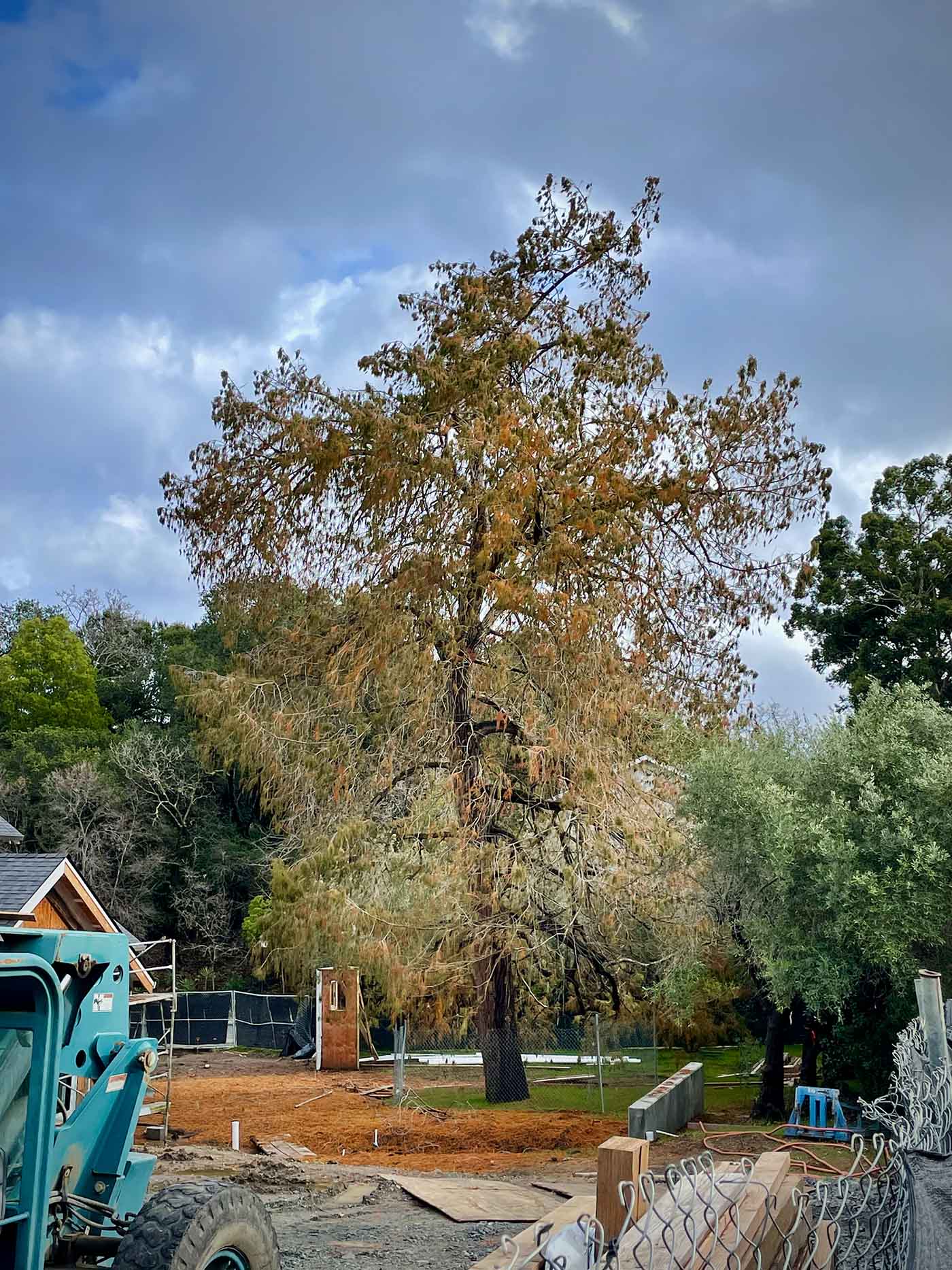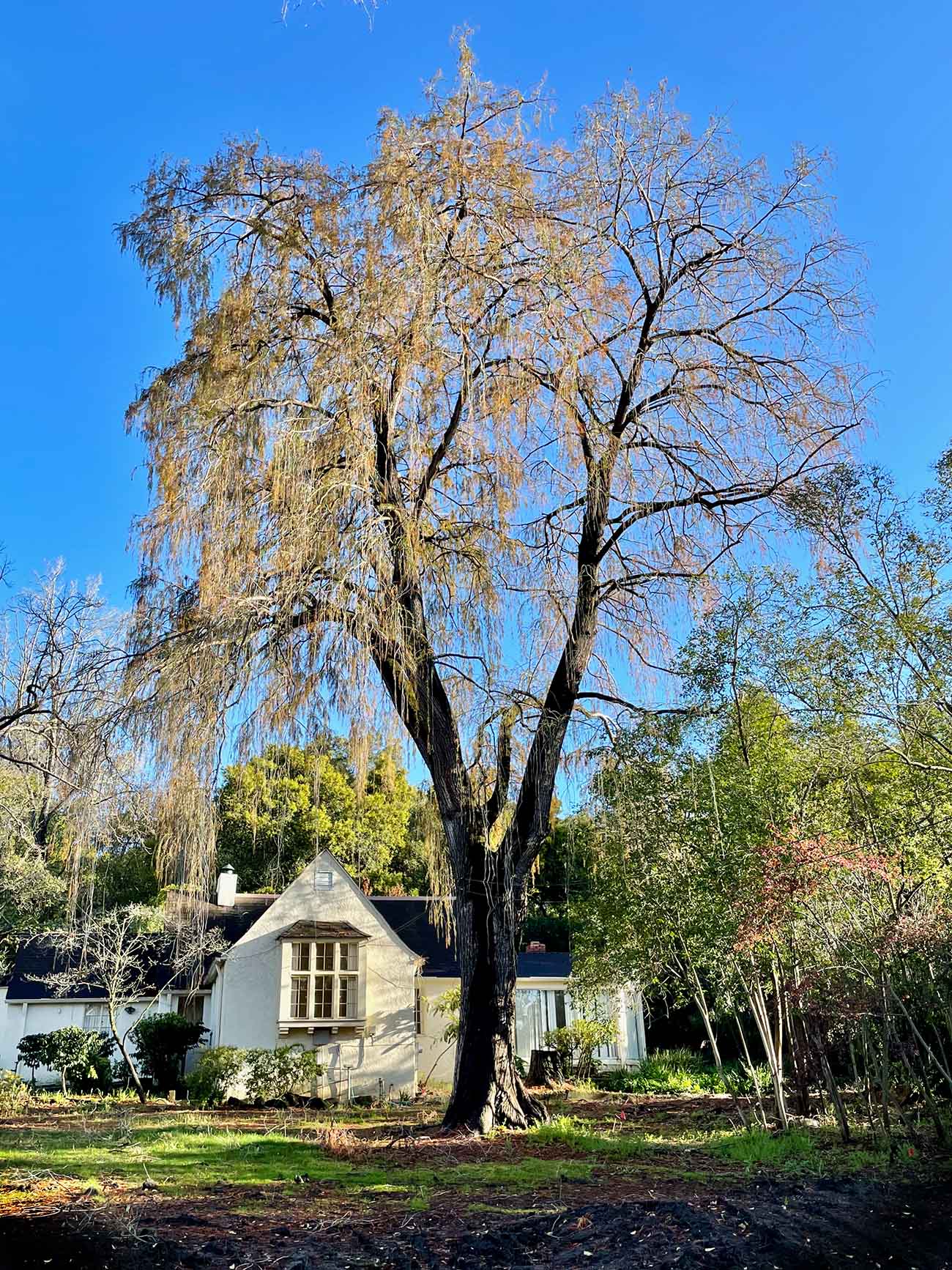Taxodium distichum
 bald cypress
bald cypress
Related to the redwood, but deciduous, the bald cypress puts on a new coat of light green feathery leaves in spring. By autumn it produces cones resembling those of a redwood, except that they fall apart as they release their seeds. When the leaves fall they fall in complete sprays. The wood is soft and light and resistant to termites and dampness, as is redwood. Bald cypress is famous for its ability to live in swamps, which it does by raising pneumatophores from its roots to form “knees,” presumably to breathe. For stability, it also develops buttresses.
Two towering specimens were discovered on campus only in 2023: one inside the fence on the north corner of Dolores Street and Cabrillo Avenue, another in front of the house at 1060 Campus Drive. One on the east side of the Angel of Grief (northeast of the Mausoleum) had been designated as a significant specimen but was removed sometime around the 1990s. In Menlo Park, a bald cypress grows as a street tree on the right edge of 135 East O’Keefe Street. Find another at the edge of the parking lot at the Menlo Park Library (800 Alma Street), near the Norfolk Island pine. Knees have not been seen around any of these trees. The University of California at Berkeley has specimens, several of which are along Strawberry Creek, southwest of the Eucalyptus Grove.
Name derivation: Taxodium – Greek word taxus (yew) and eidos (resembling), referring to the similar leaf shapes; distichum – two-ranked (the needles).
About this Entry: The main text of this entry is from the book Trees of Stanford and Environs, by Ronald Bracewell, published 2005. Campus and Menlo Park locations added; edits (Jul 2024, SP). Minor edits (Dec 2024, SP).





